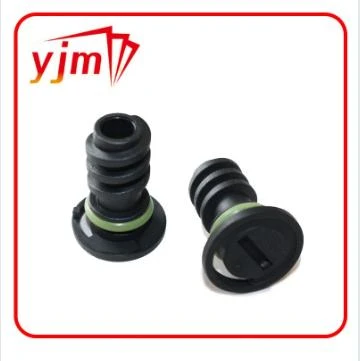oil seal standard
Understanding Oil Seal Standards Ensuring Quality and Performance
Oil seals, also known as grease seals, play a critical role in various mechanical applications by preventing the leakage of lubricants and the ingress of contaminants. These essential components are widely used in automotive, industrial machinery, and fluid handling systems. To ensure the effectiveness and reliability of oil seals, industry standards have been established to guide their design, material selection, and testing. Understanding these standards is essential for manufacturers, engineers, and end-users alike.
The Importance of Oil Seal Standards
Oil seal standards are crucial for several reasons. Firstly, they help ensure compatibility with different fluids and operating conditions. Seals must withstand varying temperatures, pressures, and chemical exposures, and standards provide guidelines on material properties and performance metrics. This is particularly important for applications involving petroleum-based oils, water, and aggressive chemicals, as seals must remain functional in challenging environments.
Secondly, adherence to standards contributes to the longevity and reliability of equipment. Using seals that meet established specifications minimizes the risk of failure, which can lead to costly repairs, equipment downtime, and safety hazards. By following standardized protocols, manufacturers can produce components that reliably meet customer expectations and regulatory requirements.
Key Oil Seal Specifications
Several organizations, such as the American National Standards Institute (ANSI), the International Organization for Standardization (ISO), and various automotive associations, have developed specifications applicable to oil seals. Key aspects include
1. Material Specifications The choice of materials for oil seals is critical. Common materials include nitrile rubber (NBR), fluorocarbon rubber (FKM), and polyurethane. Each material has distinct properties that make it suitable for specific applications, such as resistance to chemicals, temperature extremes, and wear.
oil seal standard

2. Design Standards Oil seal design includes various factors such as size, shape, and lip configurations. Standardized designs help ensure that seals provide an effective barrier against leaks while accommodating the specific design requirements of different machinery.
3. Testing Requirements To verify that oil seals perform as expected, testing protocols are outlined in the standards. These tests may include leak testing, compression set testing, and temperature cycling. By evaluating these parameters, manufacturers can ensure their seals will function consistently over time.
4. Marking and Documentation Standards dictate how oil seals should be marked for identification. Proper labeling not only helps in tracing the manufacturing details but also provides users with essential information regarding the seal’s specifications and compatibility.
Compliance and Certification
To gain market trust, many manufacturers seek compliance with oil seal standards or obtain certification from recognized bodies. This process involves rigorous testing and evaluation to ensure that products meet the specified criteria. Certifications can significantly enhance a manufacturer’s credibility and can be a deciding factor for customers when selecting suppliers.
Conclusion
In conclusion, oil seal standards are vital for ensuring the quality, reliability, and performance of these critical components across various industries. By adhering to established specifications for materials, design, and testing, manufacturers can produce oil seals that meet the demanding needs of their applications. For engineers and end-users, understanding these standards is essential for making informed choices about components, ultimately leading to more efficient and safer machinery. As technology and industry practices evolve, continued attention to oil seal standards will be necessary to keep pace with new challenges and innovations in the field.
-
Understanding the Front Main Engine Seal: Purpose, Maintenance, and Installation
News Jul.29,2025
-
Understanding O-Rings and Seal Rings: Types, Applications, and Custom Solutions
News Jul.29,2025
-
Understanding Crankshaft Oil Seals: Rear Seals, Pulley Seals, and Their Role in Engine Integrity
News Jul.29,2025
-
The Importance of Front and Rear Crankshaft Seals in Engine Performance and Oil Management
News Jul.29,2025
-
Crank Oil Seals: Functions, Types, and Cost Considerations in Engine Maintenance
News Jul.29,2025
-
A Comprehensive Guide to O-Rings and Seals: Types, Materials, and Global Applications
News Jul.29,2025
-
Mastering Diesel and Performance Engine Maintenance: A Guide to Critical Oil Gaskets
News Jul.28,2025
Products categories















